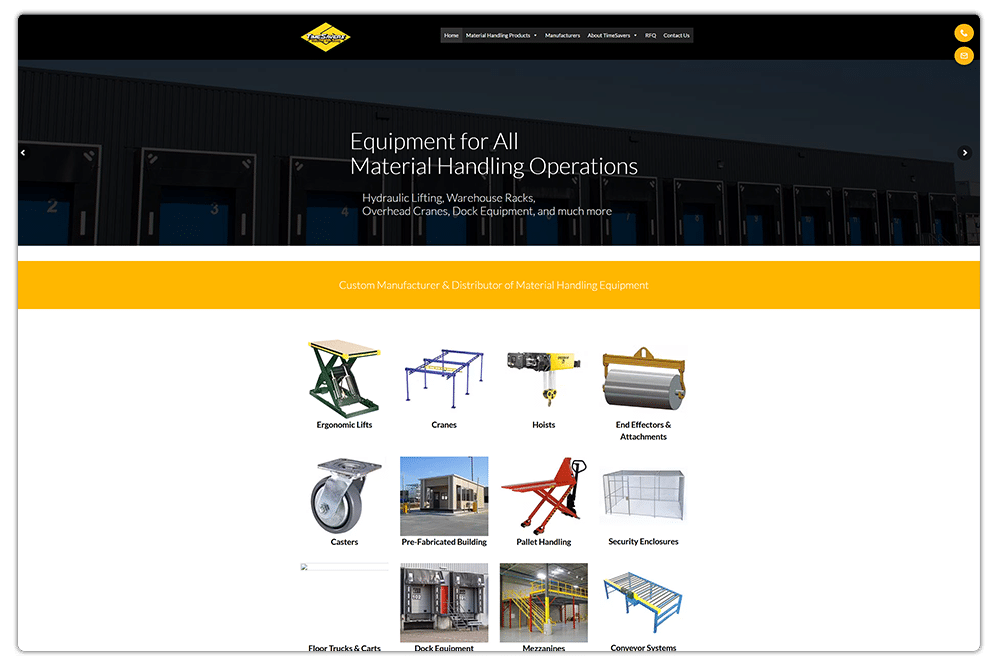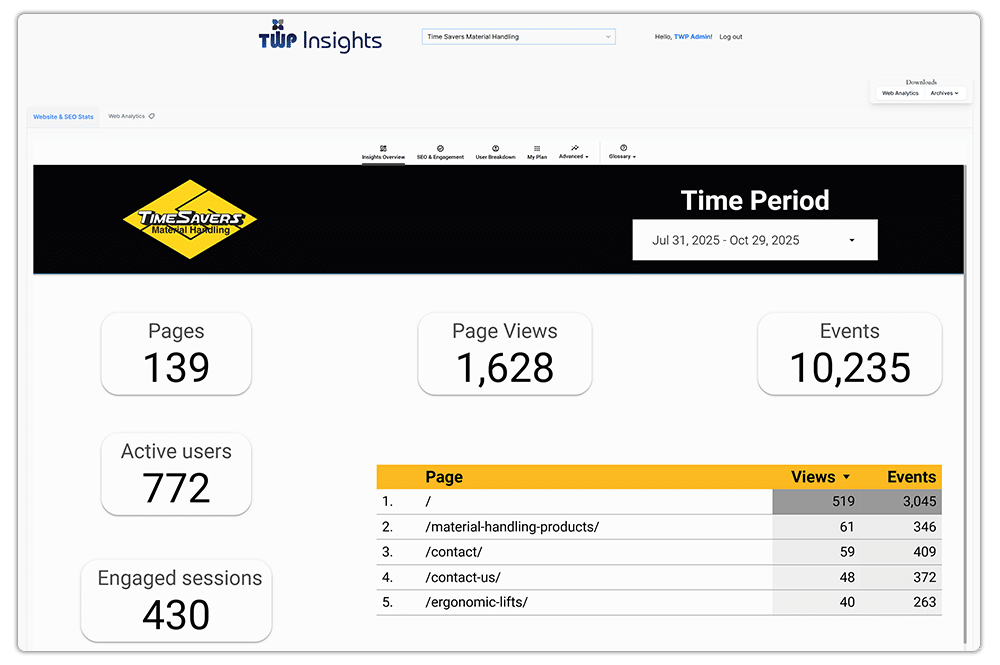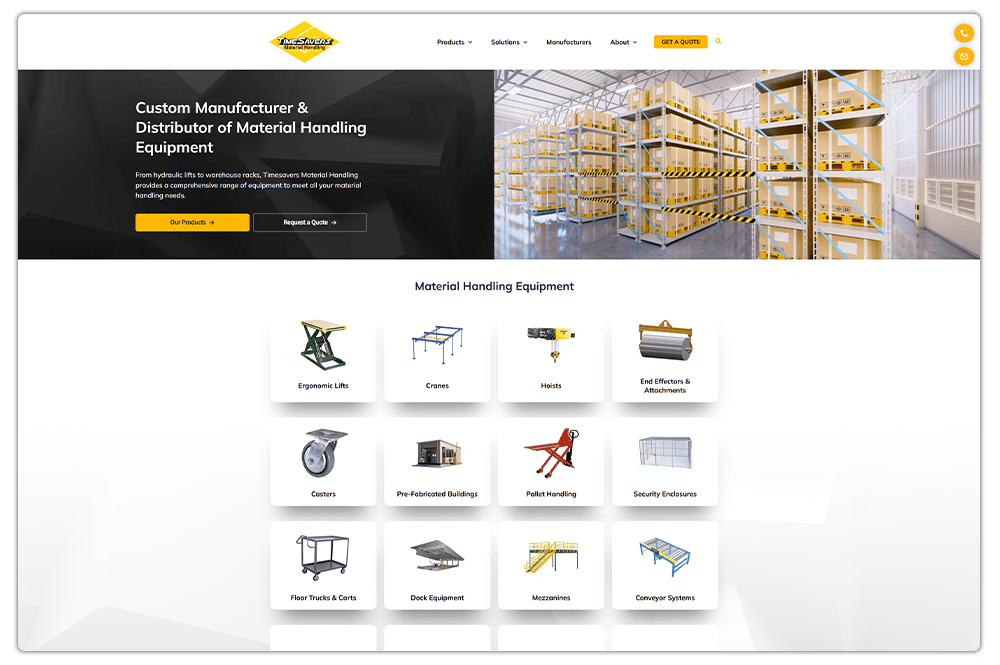TimeSavers Material Handling
A 6-Year Digital Partnership Driving Growth and Visibility
Client Overview
TimeSavers Material Handling (TSMH) is a trusted regional distributor specializing in cranes, hoists, mezzanines, and industrial lifting equipment. Representing over 20 leading manufacturers, TSMH provides turnkey material handling solutions across industries from manufacturing to warehousing.
Partnership Stage 1: Building a Comprehensive Website from the Ground Up
When TSMH partnered with TotalWeb Partners (TWP) in 2018, they had no existing digital catalog or written content, yet needed a professional website to represent more than 100 product lines from over 20 manufacturers.
Rather than relying on the client to assemble specifications and descriptions, TWP took full ownership of content development. Our team:
- Researched and organized product data directly from manufacturer websites and catalogs.
- Standardized formats across brands for consistency and search readability.
- Created category-level navigation for cranes, hoists, conveyors, mezzanines, and other key segments.
- Built a custom site architecture to support future scalability and manufacturer expansion.
The result: a robust, easy-to-navigate website that launched with zero delays.
Partnership Stage 2: Data Visibility; The Power of the TWP Insights Dashboard
In 2023, TWP implemented the TWP Insights Dashboard for TSMH—an analytics platform integrating Google Search Console, Analytics, and CRM conversion data.
This dashboard provided real-time visibility into:
- Search rankings by product category
- Visitor trends by industry
- Conversions by landing page
- Year-over-year growth metrics
In 2025, the dashboard was upgraded with enhanced filtering, mobile reporting, and competitor benchmarking—allowing TSMH to see not just what’s working, but where new opportunities lie.
Partnership Stage 3: Expanding Online Visibility Through SEO (2024–2025)
Six years later, as TSMH’s business grew, they wanted to expand their online footprint and better utilize their website to generate more qualified leads. TotalWeb Partners introduced a comprehensive SEO & content expansion package, focusing on:
- Updated Design: Revamped the existing website with a modern look
- New Solutions Pages: Tailored content showing how TSMH serves key industries (manufacturing, logistics, construction, etc.).
- On-Page Optimization: Refining meta tags, image alt-texts, and structured data across existing pages.
- Enhanced Product Pages: Adding detailed descriptions and calls-to-action for installation, design, and custom engineering.
Despite the size of this initiative, TotalWeb Partners took the stress off the clients’ hands, allowing them to focus on what they do best: running their business. TSMH’s total time investment was approximately 45 minutes, including a kickoff call and final review.
TotalWeb Partners handled:
- Content generation and implementation
- Design updates
- Full technical optimization
- Publication and search submission
Results
- 100+ product pages created from manufacturer data without client-provided content
- Website lifespan extended beyond 6 years through scalable architecture
- SEO strategy deployed in under 45 minutes of client involvement
- TWP Insights Dashboard implemented for ongoing performance monitoring
- Continuous traffic growth and new lead generation from targeted Solutions content
Partnership Stage: Future
TimeSavers Material Handling’s digital evolution demonstrates the TotalWeb Partners difference: a turnkey process that transforms complex product catalogs into optimized, lead-generating assets.
From 2018’s data-driven launch to 2025’s SEO expansion and real-time analytics, TWP has provided a complete, low-effort, high-impact digital strategy that continues to grow with the business. As we look to the future, TWP will closely monitor TimeSavers Material Handling’s site, to innovate when needed, and to find ways to continuously provide next level opportunities as they arise.










